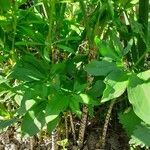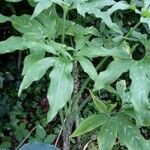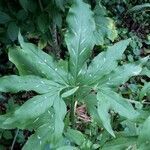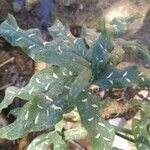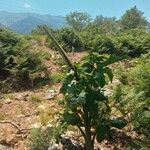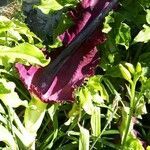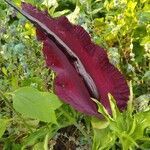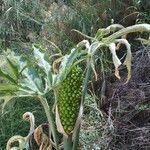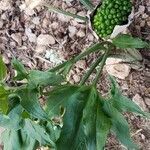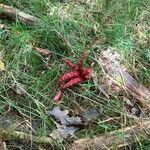Stout, spotted-sheathed, erect, tuberous perennial herb to 1 m high. Leaves dissected; laminae bright green, fan-shaped, ± 20 × 30 cm, with bow-shaped base curving out on either side of petiole, remainder cut into 11-15 lanceolate segments, central one much broader than laterals with scattered narrow-linear white marks; petioles green, c. 20 cm long, leathery; sheaths to 70 cm long, conspicuously streaked and spotted with red, black, green and brown markings. Scape thick, green, not spotted, c. 50 cm long. Spathe c. 45 × 15 cm, green on outside, deep reddish-purple on inside, margin purple, ruffled, tube green inside with vertical purple lines. Spadix ± = spathe, red-purple to very dark purple almost black, basal female zone c. 1.5 cm long, male zone c. 1.5 cm long, sometimes topped by a few sterile flowers or purple papillae; terminal sterile appendage ± 40 cm long, tapering, stipitate. Berries scarlet.
More
A tall tuber forming plant. It grows 1 m tall. The 'stem' is thick and strongly blotched. This 'stem' is formed from the leaf stalks and the flower stem. The leaves are deep green and often have white streaks. The leaves are deeply divided into 10-15 narrow segments. The edges of these segments are wavy. The spathe around the flower is a rich velvety red but green on the outside. The spathe is broadly sword shaped. It is 25-40 cm long. The spike of flowers is a deep reddish-black. It is stout and shiny and erect. It tapers to the tip. The flower has a strong bad smell. The fruit are berries in an oblong head.
